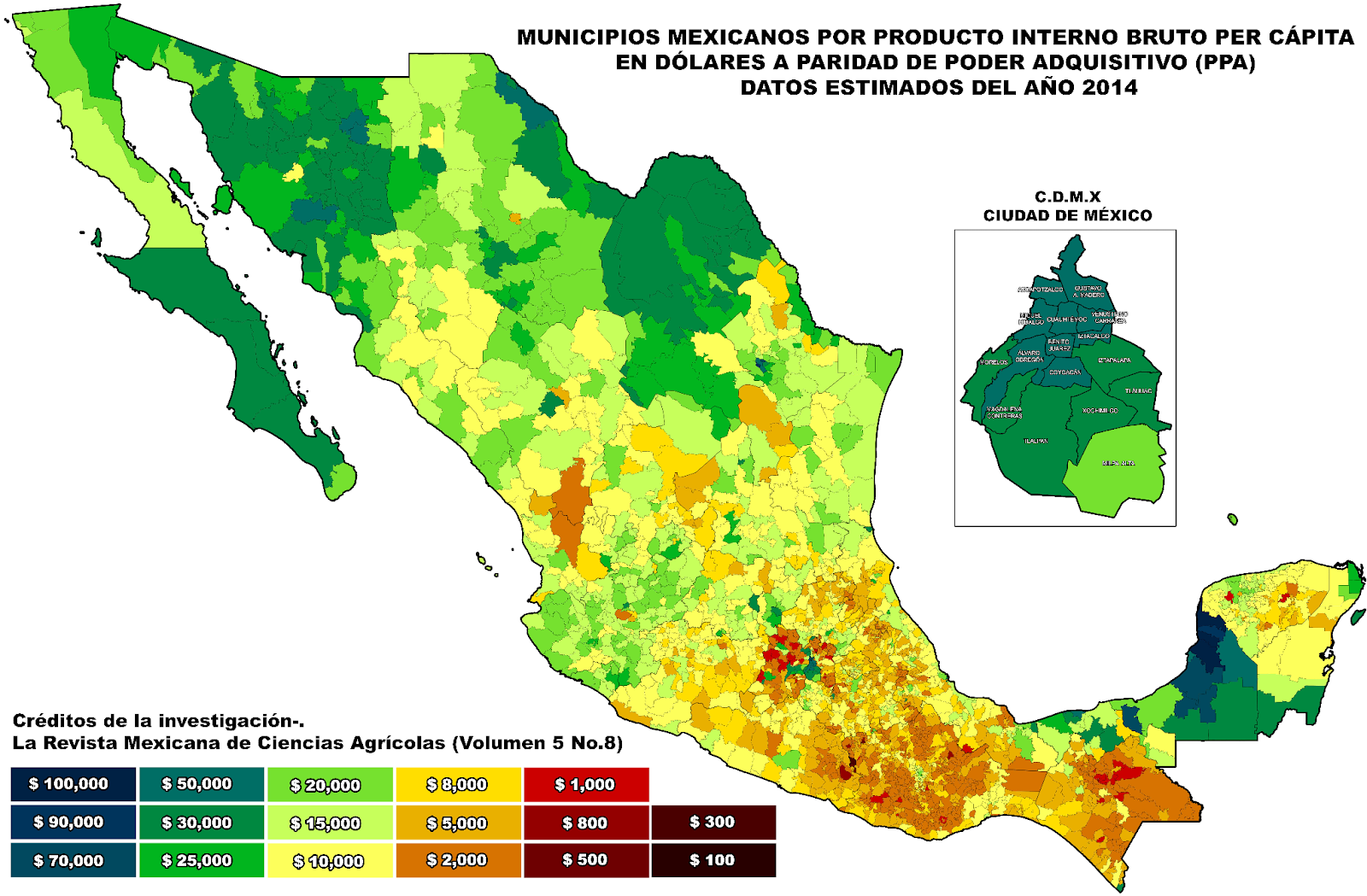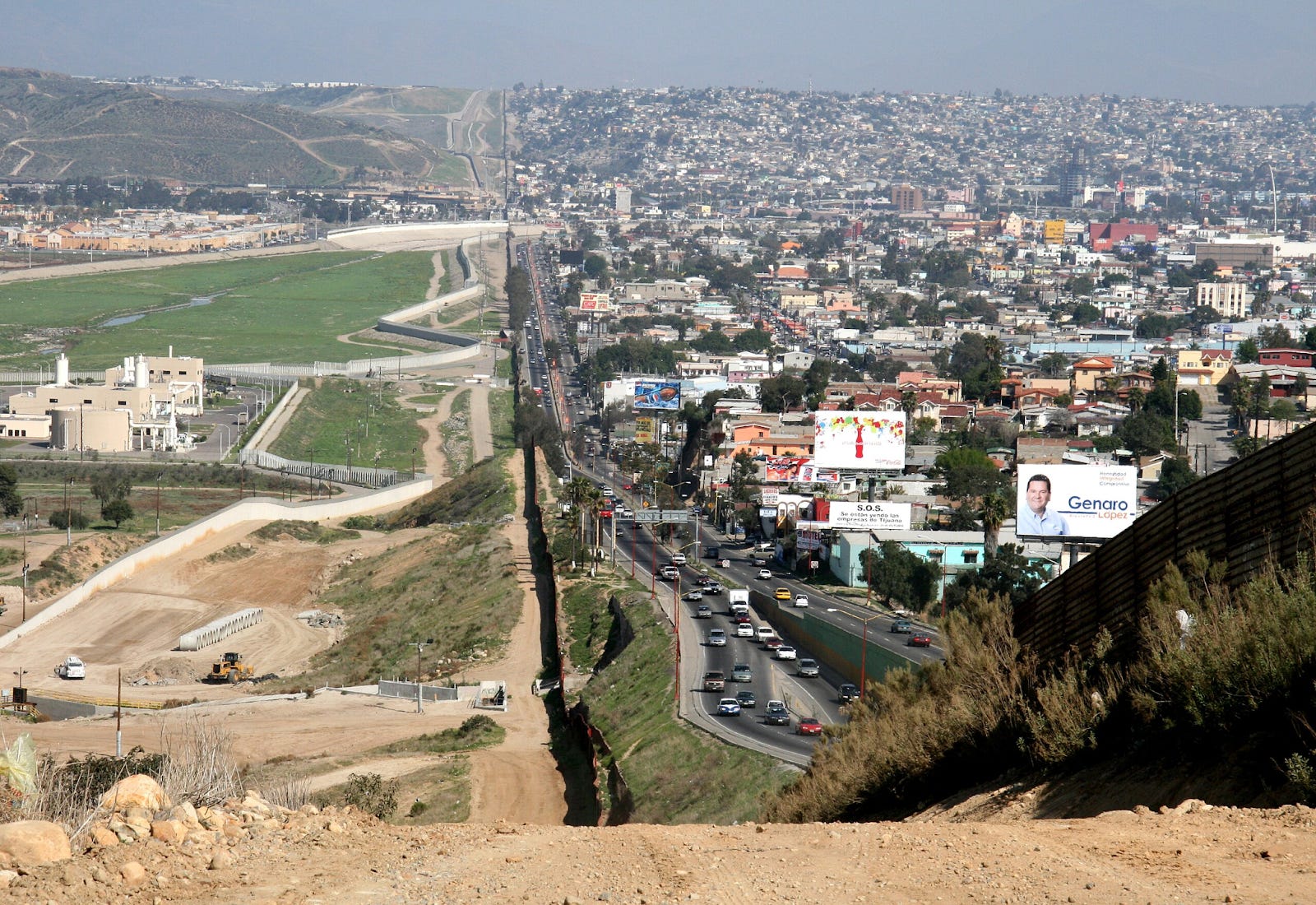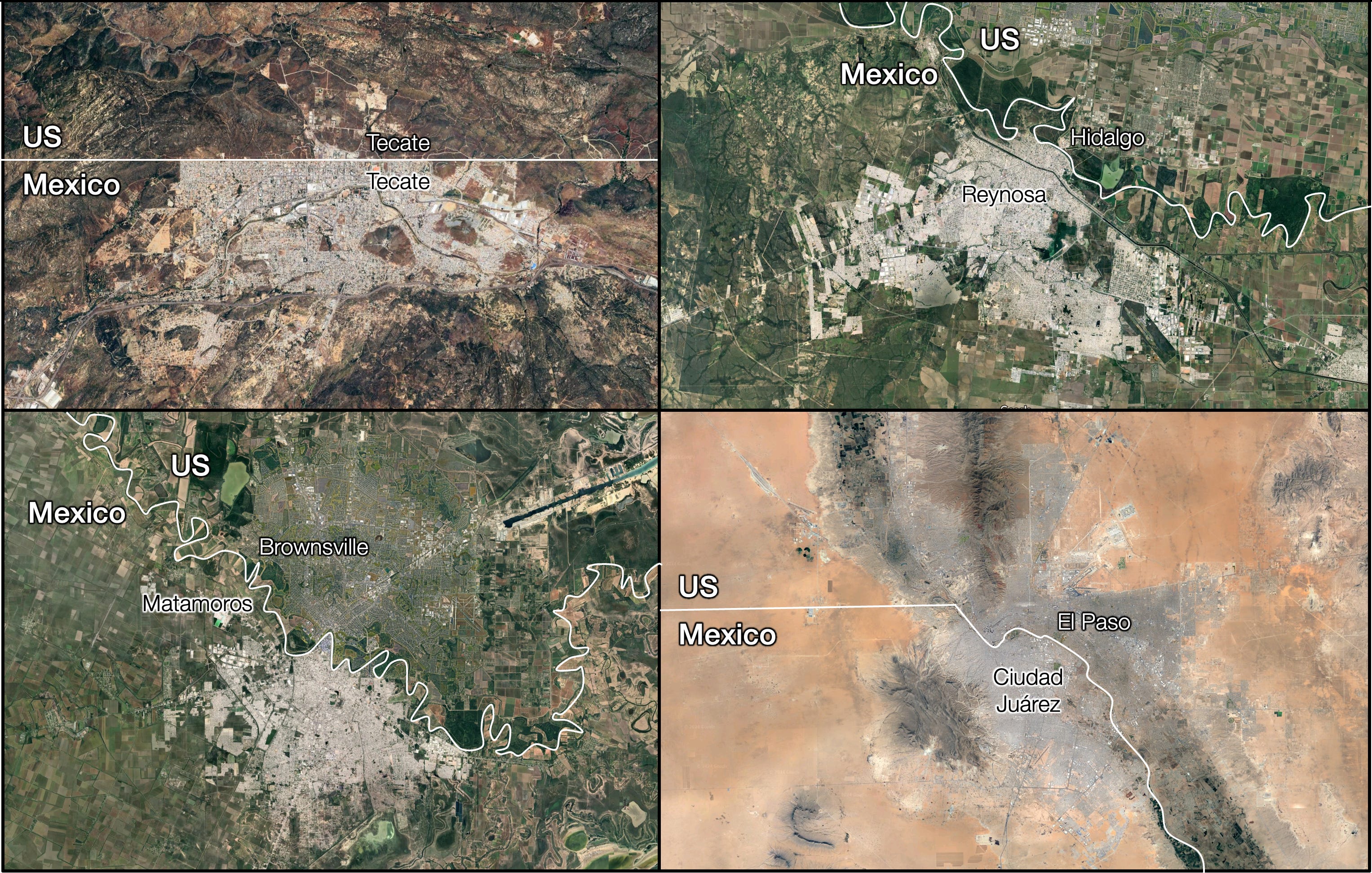What's Mexico’s Future?
Mountains, Oil, Drugs, Borders
Tan lejos de Dios, y tan cerca de los Estados Unidos (So far away from God, and so close to the United States).—Porfirio Diaz, Mexican ruler.
The parts of a country that can most easily develop are plains. But Mexico has mountains everywhere!
Its only plains are:
A thin sliver of coast on the Sea of Cortez1
A larger coastal plain on the Gulf of Mexico
The Yucatan Peninsula
All three, however, are either desert or jungle. Only 12% of Mexican land is arable.
West of the Sierra Madre Occidental, the coastal valley close to the Sea of Cortez is somewhat productive:

But although patches of savanna in Sinaloa and Sonora states serve as adequate grazing land for cattle and other livestock, western Mexico requires a lot of infrastructure to divert water from the region’s relatively sparse river system for agricultural use, so agricultural development is not easy.
The upside is that, thanks to the precipitous fall of mountains into the ocean, there are some reasonably good ports on Mexico’s Pacific coast.
On the eastern side, the slopes of the Sierra Madre Oriental drop into wider flatlands compared to the narrow littoral strip on the west. But these flatlands have dense tropical forests, so they’re not easy to settle. And these gentle slopes continue into the sea, making that coast terrible for ports, as we have seen.
In between the two Sierras Madre, you find the Mexican Altiplano, with some of the most desolate desert in North America, as we saw in a previous article. So the northern part of Mexico is empty because it’s a barren mountain desert.
And yet, here’s a map of Mexico’s GDP per capita:

US Magnetism
The north of Mexico is so much richer than the south! Of course, a big reason is this:

Here are some satellite pictures of other border cities between the US and Mexico:
And here’s a picture on the ground:

NAFTA, the free trade agreement signed by the US, Canada, and Mexico in 1994, made the Mexican border territory an extension of the US, without additional taxes, and with cheap Mexican labor staying in Mexico.2
This is better for many US companies than moving their industries to places like China because transportation is cheaper, it’s easy to fix mistakes, they can order only the quantities they need (and reorder as demand reacts), they can change their products easily if demand shifts, and all within a very short turnaround time.
This is great for everybody:
US companies reduce costs
Mexican workers get jobs and higher salaries
Mexican companies develop technology
The Mexican government diversifies its economy and increases its income from taxes
Because of all these advantages, manufacturing plants became dual “citizens”, with the capital-intensive part in the US and the labor-intensive part in Mexico. This has meant that US-Mexican border cities have blossomed: San Diego and Tijuana, Calexico and Mexicali, El Paso and Ciudad Juárez, Brownsville and Matamoros…
Mexico’s industry, therefore, is strong, and its exports advanced and well diversified:
Here’s how this has evolved since the signing of NAFTA:
In 2021, 9% of Mexican workers were employed in maquiladoras, producing 11% of GDP.
Now, remember the map of Mexico’s population:
What this indicates is that a second center of power is emerging in Mexico’s north. This is dangerous for many countries, since the interests of the center and the periphery diverge. It’s especially dangerous for Mexico, however, because the emptiness and deserts and mountains, as well as weak transportation infrastructure and different climates, make distances between the centers of power huge.
This trend of a burgeoning alternative center of power is not going nowhere. As the US decouples from China, it will want to move more of its production to Mexico.3

More production in Mexico means more local industry, more know-how, more network effects, more economies of scale, and more advanced technology.
It also means that Mexico’s economy becomes even more dependent on the US’s. 85% of Mexico’s exports are to the US or Canada. And Mexico’s biggest export now is… people. In 2015, remittances overtook oil to become the single largest source of foreign income for Mexico—most of them from the US, which is now home to more Spanish-speaking people than Spain.
This is the future of Mexico: More technological and economic development, at the cost of an alternative center of power in the north—the border with the US, and Washington D.C.
But why did Mexico sign NAFTA in 1994 to begin with? Oil.








